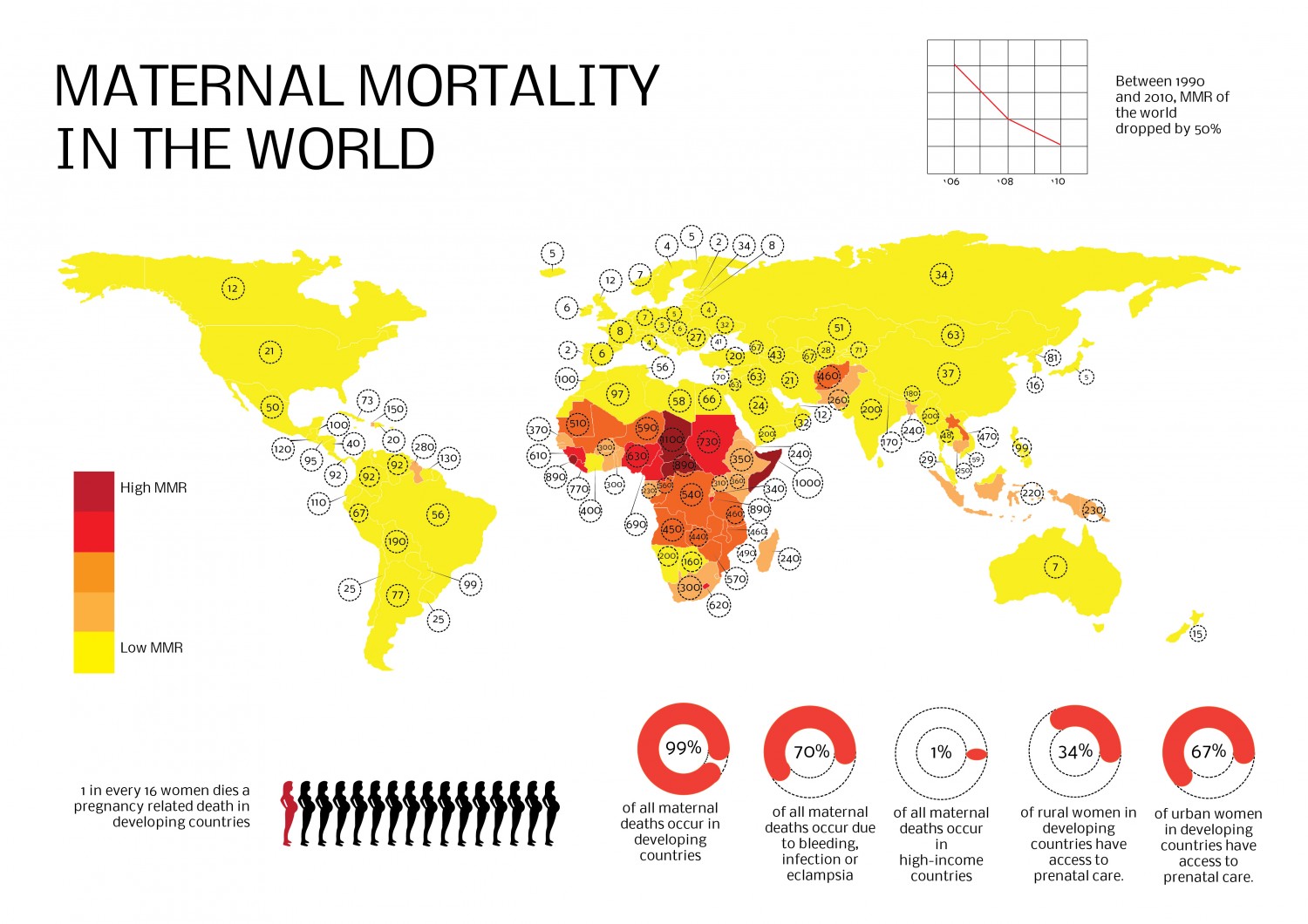Situation
Every day in 2013, about 800 women died due to complications of pregnancy and child birth. Almost all of these deaths occurred in low-resource settings, and most could have been prevented. The primary causes of death are haemorrhage, hypertension, infections, and indirect causes, mostly due to interaction between pre-existing medical conditions and pregnancy. Of the 800 daily maternal deaths, 500 occurred in sub-Saharan Africa and 190 in Southern Asia, compared to 6 in developed countries. The risk of a woman in a developing country dying from a maternal-related cause during her lifetime is about 23 times higher compared to a woman living in a developed country. Maternal mortality is a health indicator that shows very wide gaps between rich and poor, urban and rural areas, both between countries and within them.
Trends
The number of women dying due to complications during pregnancy and childbirth has decreased by 45% from an estimated 523 000 in 1990 to 289 000 in 2013. The progress is notable, but the annual rate of decline is less than half of what is needed to achieve the Millennium Development Goal (MDG) target of reducing the maternal mortality ratio by 75% between 1990 and 2015, which would require an annual decline of 5.5%. The 45% decline since 1990 translates into an average annual decline of just 2.6%. Between 1990 and 2000, the global maternal mortality ratio decreased by 1.4% per year, while from 2000 to 2013 progress accelerated to a 3.5% decline per year.

















